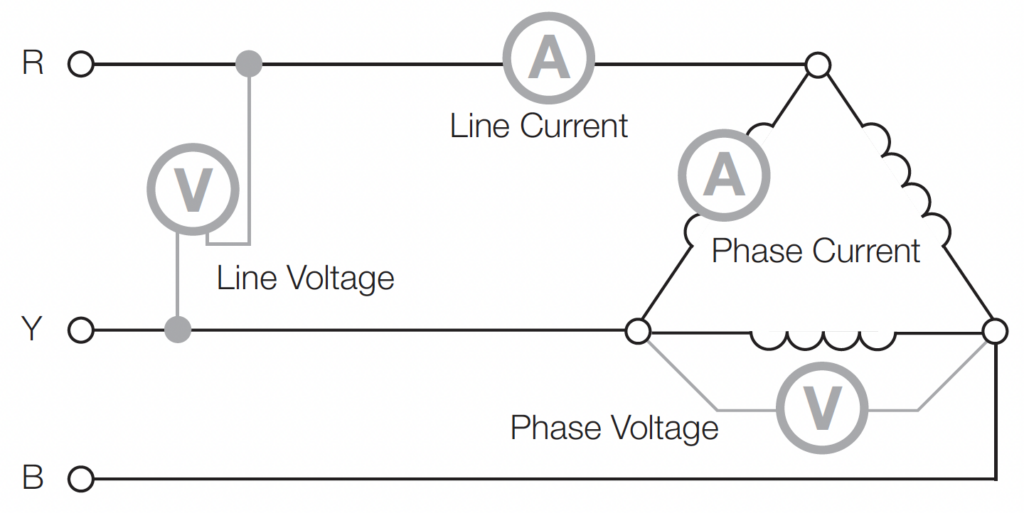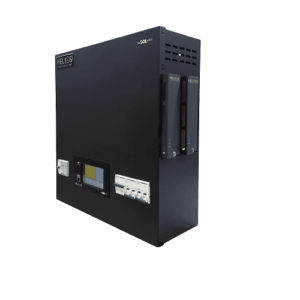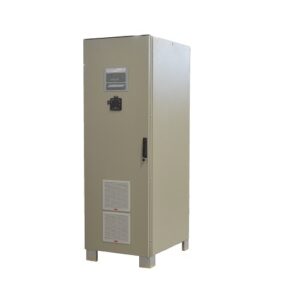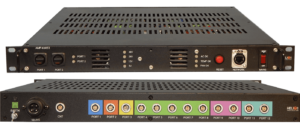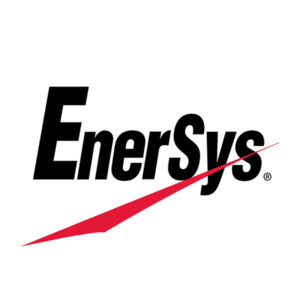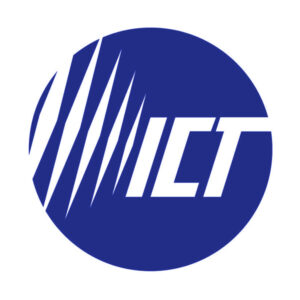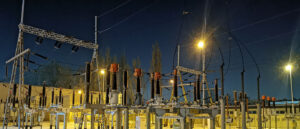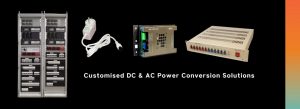Power Sources
Sources of electricity (most notably rotary electro-mechanical generators) naturally produce voltages
alternating in polarity, reversing positive and negative over time, known as alternating current (AC).
AC power is typically derived from the local power company grids, either as single or three-phase
source. This is then converted to DC within the majority of electronic equipment.
AC Power Sources
In applications where electricity is used to dissipate energy in the form of heat (heaters, light bulbs),
the polarity or direction of current is irrelevant so long as there is enough voltage and current to the
load to produce the desired heat (power dissipation). However, with AC it is possible to build electric
generators, motors and power distribution systems that are far more efficient than a DC equivalent.
For this reason, AC is used predominantly in high power applications.
AC Generator / Source
In order to construct an AC generator, a magnetic field is rotated around a set of stationary wire
coils, the resultant AC voltage/potential produced as the field rotates being in accordance with
Faraday’s Law of electromagnetic induction. The basic operation of the AC generator, also known as
an alternator, can be seen below:
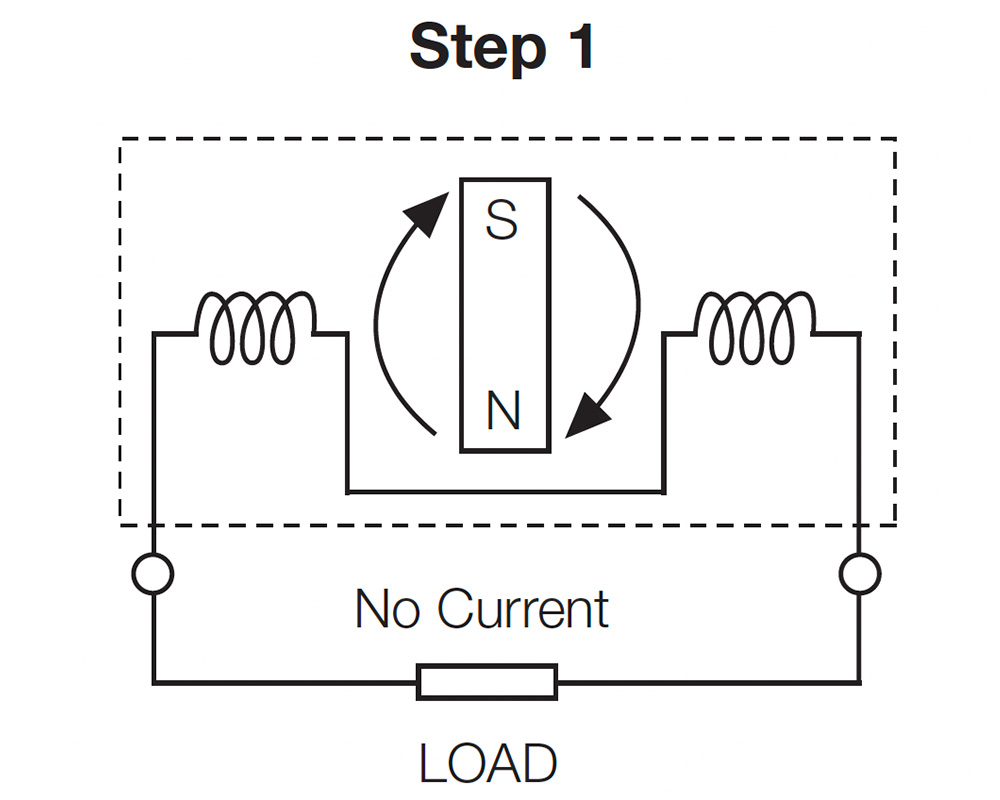


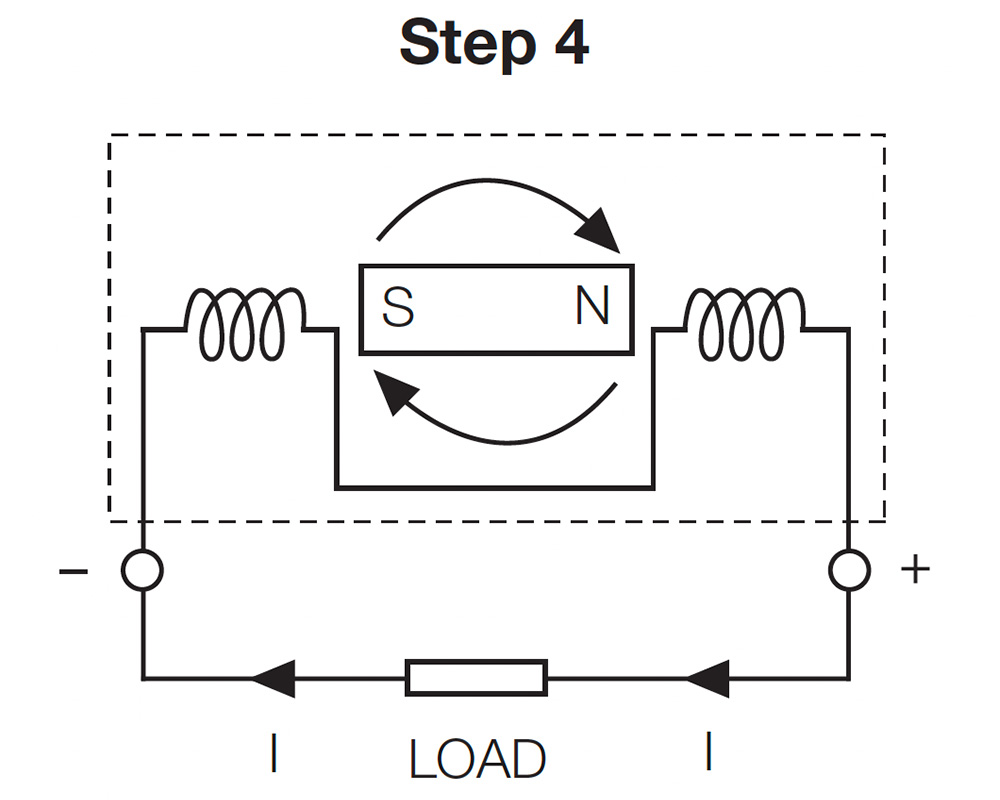
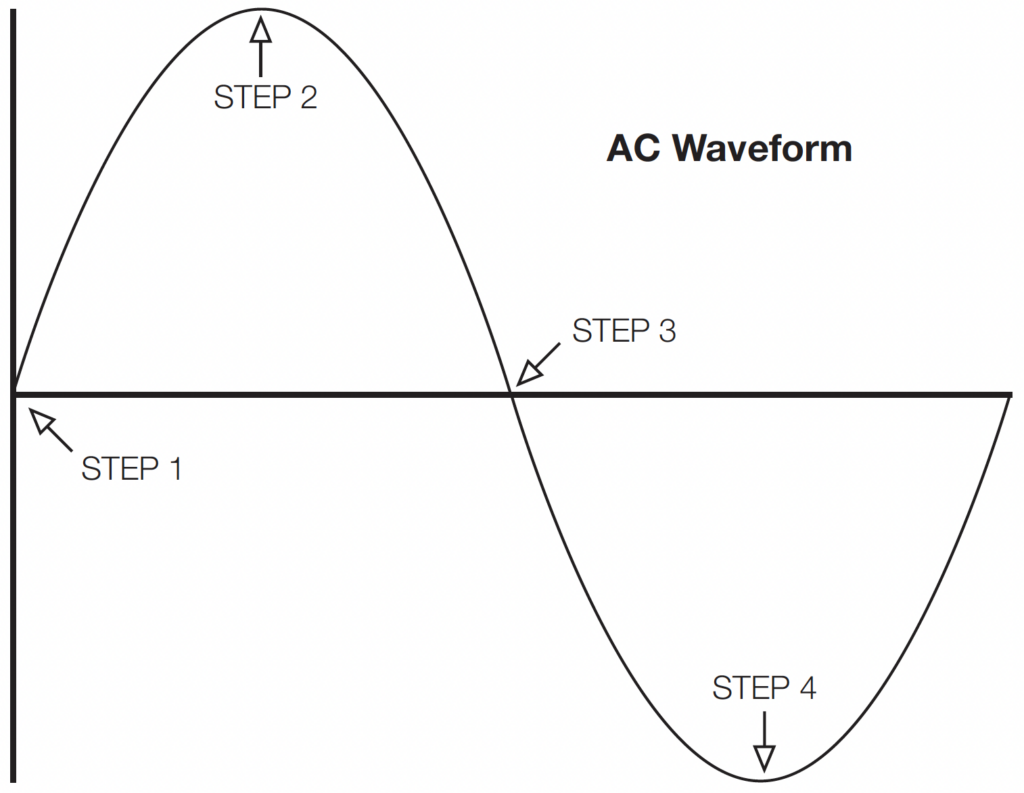
The polarity of the voltage across the wire coils reverses as the opposite poles of the rotating magnet
pass by. Connected to a load, this reversing voltage polarity creates a reversing current direction in
the circuit.
The frequency of the resultant wave form is dependent on the speed of the rotating magnetic field.
| Frequency = = | No. of cycles/second No. of revolutions/second |
AC generators and AC motors are generally simpler in construction than DC generators and DC
motors. In addition to this, AC generators & motors benefit from the effect of electromagnetism, also
known as mutual induction, whereby two or more coils of wire are positioned so that the changing
magnetic field created by one induces a voltage in the other.
The diagram below shows two mutually inductive coils. Energizing one coil with AC voltage creates
an AC voltage in the other coil. This device is known as a transformer:

The transformer’s ability to step AC voltage up or down gives AC an advantage unmatched by DC in
power distribution. When transmitting electrical power over long distances, it is far more efficient to
do so with stepped-up voltages and hence stepped-down currents (smaller-diameter wire with lower
resistive power losses), then to step the voltage back down and the current back up for industry,
business, or consumer use.
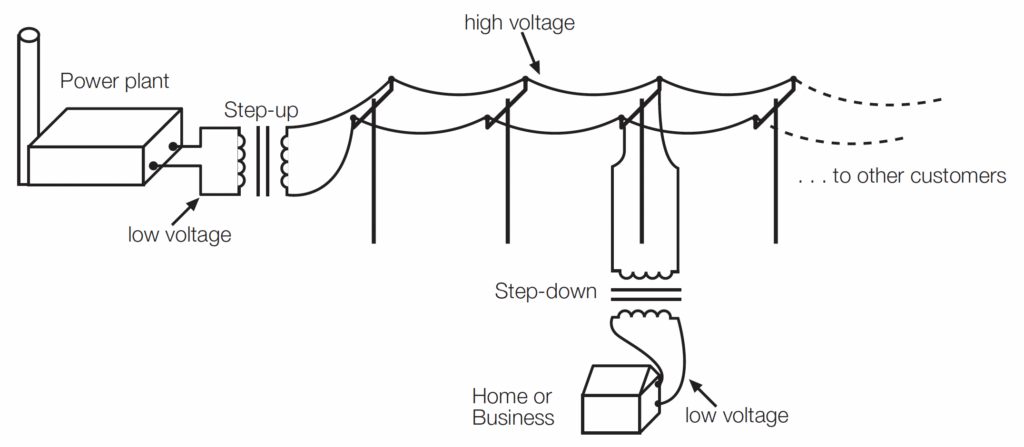
Transformer technology has made long-range electric power distribution practical. Without the ability
to efficiently step voltage up and down, it would be prohibitively costly to construct power systems
for anything but close-range use, within a few miles at most.
Three Phase AC Source
The power delivered by a single-phase system pulsates and falls to zero during each cycle, whereas
the power delivered by a three-phase circuit also pulsates, but never to zero. In a balanced threephase system, the conductors need be only about 75% the size of the conductors for a single-phase
two-wire system of the same kVA rating.
If three separate coils are spaced 120° apart, the three voltages are produced 120° out of phase
with each other, when the magnetic field cuts through the coil.
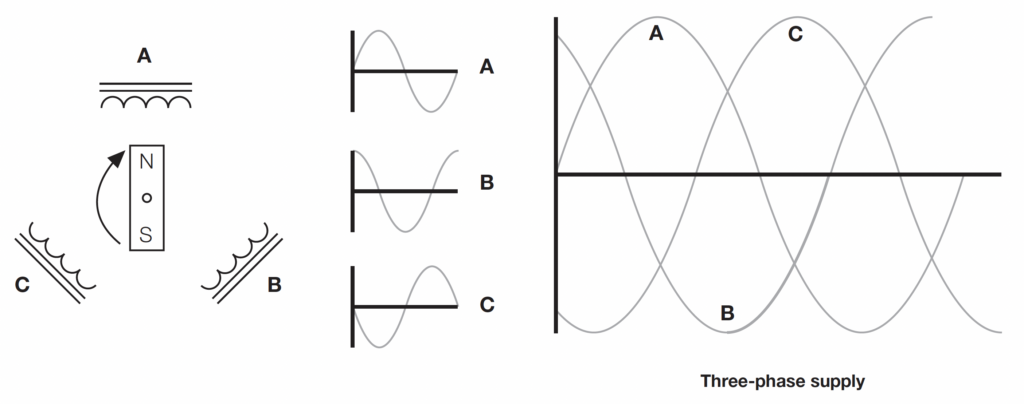
There are two basic three-phase connections used:
Star or Wye Connection
Connecting one end of each of the coils
together as shown right makes a star or
wye connection. The phase voltage (or
phase to neutral voltage) is the voltage
measured across a single coil. The line
voltage (phase to phase voltage) is
measured across two coils.
In a star- or wye-connected system, the line
voltage is higher than the phase voltage by
a factor of the square root of 3 (1.732).
VLINE = VPHASE X √3
VPHASE = VLINE / √3
This system would be a 4-wire plus earth supply
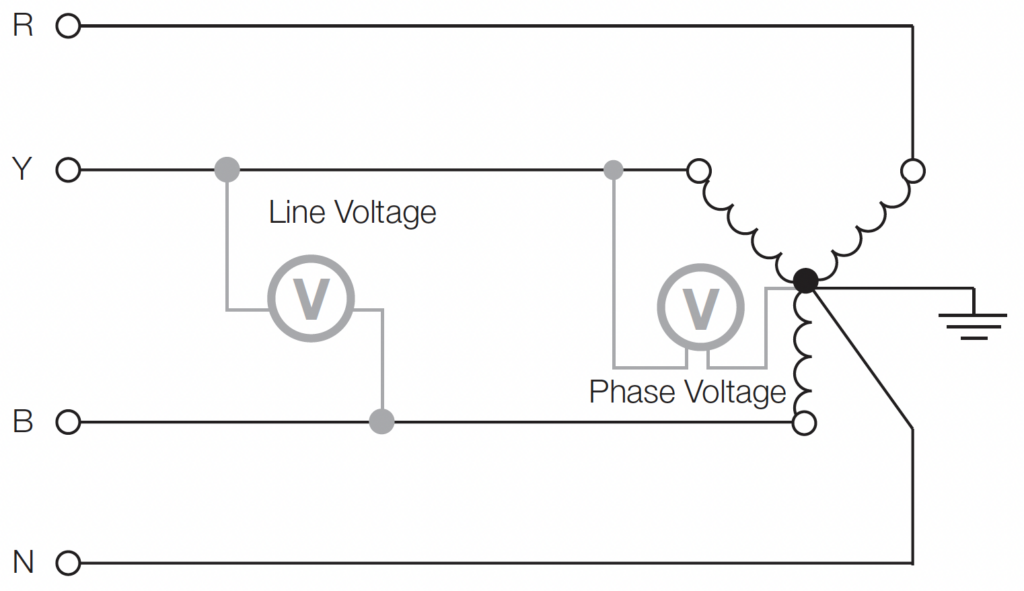
Delta Connection
The three separate coils are connected to
form a triangle in a delta-connected
system, which derives its name from the
fact that a schematic diagram of this
connection resembles the Greek letter
delta.
In this configuration the line voltage and
phase voltages are the same.
VLINE = VPHASE
However, the line current is higher than the phase current by a factor of the square root of 3 (1.732).
The reason for this difference in current is that current flows through different windings at different
times in a three-phase circuit.
At times, current will flow between two lines only, at other times current will flow from two lines to the
third.
This system would be a 3-wire plus earth supply
